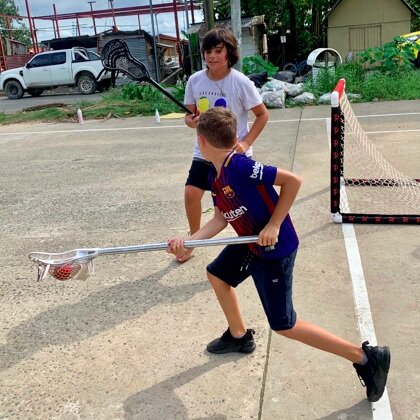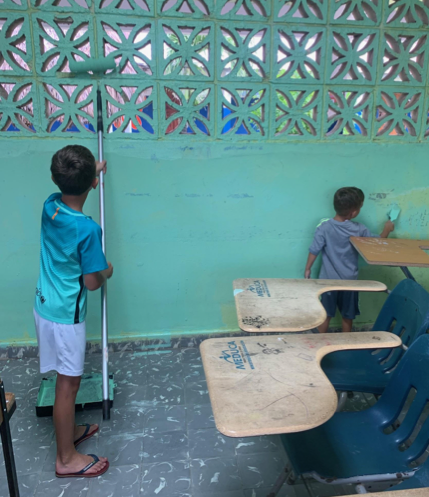After a two-year hiatus I finally come home to Nicaragua.
What a wild two years it has been. The last time I was in Nicaragua was February 2018 with the Middlebury College Men’s and Women’s lacrosse teams. It was the start of the school year and we spent the week painting the classrooms to get the school looking pretty. The future was bright.
Then in April a political uprising led to violence and uncertainty. Schools were closed for two+ months. We brought all our US volunteers home and cancelled all service trips for safety concerns.
Since then we’ve opened programs in two new countries and my job has been all about ensuring LtN’s future. My focus was not on day-to-day programs in Nicaragua. That job I left to Norman, our Country Director, and the coaching staff. They needed to step up. They needed to work with limited resources. They needed to succeed without volunteers.
In my first visit back since the political uprising, I’m happy to say that they did. Our programs are stronger. Attendance at study hall is higher. Average grades are higher. Our coaching staff run engaging practices that are teaching and developing some incredible young people.
Here are my biggest take aways from my first week back in Nica since 2018.
We play the long game.
Sometimes it’s hard to see the impact because we get bogged down by the day to day grind. Coming back to Nica after two years really showed me how far we’ve come. In the past two years our team of local coaches have taken ownership of the programs and the community has responded. Parents come to watch practice, some even strap on a helmet and mix it up with the kids. That was not seen two years ago.
This is a result of 11 years of working with the community and building local leaders over time. It reminded me that our work is paying dividends. However, those dividends don’t come after one week or one semester. Our work is long-term and the more we strive to get better every day, the bigger the impact will be in the long-run.
Volunteers are critical to our work.
Our kids love having volunteers at practice. Not just because they have different accents and let them get away with a little more than our coaches do, but because they get to learn new things while making new friends and understanding another culture.
Our coaches love having our volunteers too. They want to improve as coaches so they can challenge our kids on the field as much as they do off the field. Without a consistent flow of US lacrosse players and coaches, our coaches were limited to YouTube and Instagram videos. While those are helpful, having experienced lacrosse players and coaches is the best way to improve.
To our volunteers - our coaches and kiddos miss you and we hope to start bringing groups back to Nicaragua soon!
With success and growth comes new challenges and opportunities.
Yes, we’ve grown. Our coaching staff is stronger. Parents are more engaged. The schools we work with are committed. The kids have bought in. The challenges I faced as a volunteer in 2012 are not the same that our coaches face today. That is a good thing.
The challenges we face are a result of the work we’ve put in to achieve our mission. These new challenges will only make our programs stronger once we overcome them. I’m excited to look back on this post in two years to see what new challenges are in front of us and how we were able to overcome the ones we have today.














